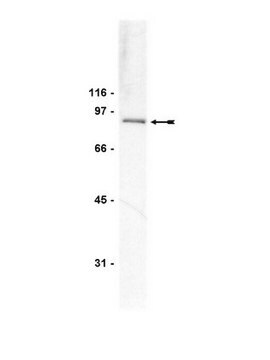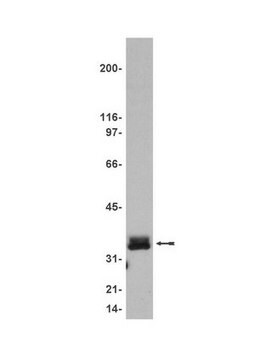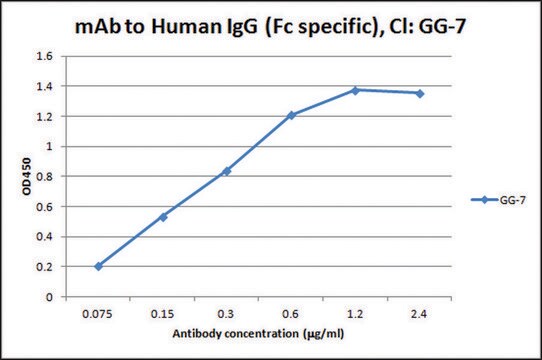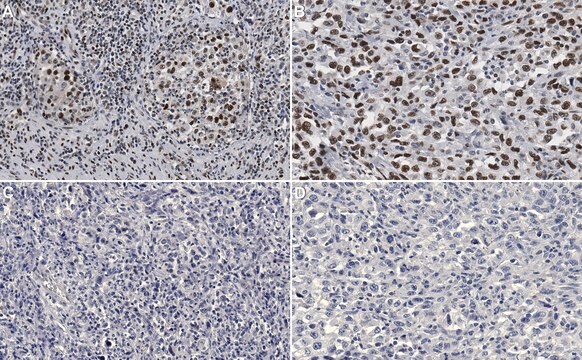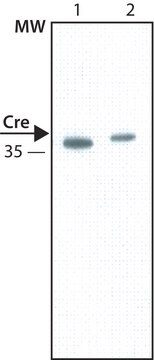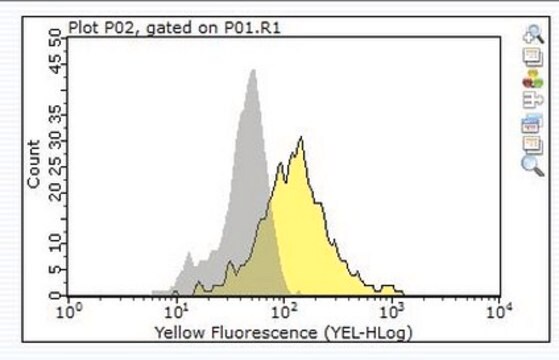05-163
Anti-PLCγ-1 Antibody
Upstate®, from mouse
Synonyme(s) :
1-phosphatidylinositol-4,5-bisphosphate phosphodiesterase gamma 1, Phosphoinositide phospholipase C, Phospholipase C-gamma-1, monophosphatidylinositol phosphodiesterase, phosphatidylinositol phospholipase C, phosphoinositidase C, phospholipase C gamma 1,
About This Item
Produits recommandés
Source biologique
mouse
Niveau de qualité
Forme d'anticorps
purified immunoglobulin
Type de produit anticorps
primary antibodies
Clone
B-2-5, monoclonal
B-20-3, monoclonal
B-6-4, monoclonal
D-7-3, monoclonal
E-9-4, monoclonal
Espèces réactives
mouse, human, bovine, rat, rabbit
Fabricant/nom de marque
Upstate®
Technique(s)
immunocytochemistry: suitable
immunoprecipitation (IP): suitable
western blot: suitable
Isotype
IgG
Numéro d'accès NCBI
Numéro d'accès UniProt
Conditions d'expédition
wet ice
Modification post-traductionnelle de la cible
unmodified
Informations sur le gène
human ... PLCG1(5335)
Description générale
Spécificité
Immunogène
Application
4 µg of a previous lot of antibody immunoprecipitated PLCγ-1 from non-stimulated A431 cell lysate, previous lots immunoprecipitated PLCγ-1 from rabbit brain cytosol preparation.
Immunocytochemistry:
5-10 µg/mL of previous lots of this antibody detected PLCγ-1 on ethanol-acetic acid [95:5] fixed A431 cells.
Signaling
Lipid Signaling
Qualité
Western Blot Analysis:
0.5-2 µg/mL of this lot detected PLCγ-1 in human A431 carcinoma cells; previous lots detected PKCγ-1 in rabbit brain cytosol and bovine brain cytosol preparations.
Description de la cible
Forme physique
An equal mix of IgG antibodies produced by SP2/0-Ag14 x Balb/c spleen cells (Suh, P.G., 1988) and propagated as purified immunoglobulin. Clones B-2-5, B-6-4, B-20-3, D-7-3, E-9-4.
Stockage et stabilité
Remarque sur l'analyse
Positive Antigen Control: Catalog #12-301, non-stimulated A431 cell lysate. Add 2.5µL of 2-mercaptoethanol/100µL of lysate and boil for 5 minutes to reduce the preparation. Load 20µg of reduced lysate per lane for minigels.
Informations légales
Clause de non-responsabilité
Vous ne trouvez pas le bon produit ?
Essayez notre Outil de sélection de produits.
En option
Code de la classe de stockage
12 - Non Combustible Liquids
Classe de danger pour l'eau (WGK)
WGK 1
Point d'éclair (°F)
Not applicable
Point d'éclair (°C)
Not applicable
Certificats d'analyse (COA)
Recherchez un Certificats d'analyse (COA) en saisissant le numéro de lot du produit. Les numéros de lot figurent sur l'étiquette du produit après les mots "Lot" ou "Batch".
Déjà en possession de ce produit ?
Retrouvez la documentation relative aux produits que vous avez récemment achetés dans la Bibliothèque de documents.
Notre équipe de scientifiques dispose d'une expérience dans tous les secteurs de la recherche, notamment en sciences de la vie, science des matériaux, synthèse chimique, chromatographie, analyse et dans de nombreux autres domaines..
Contacter notre Service technique
